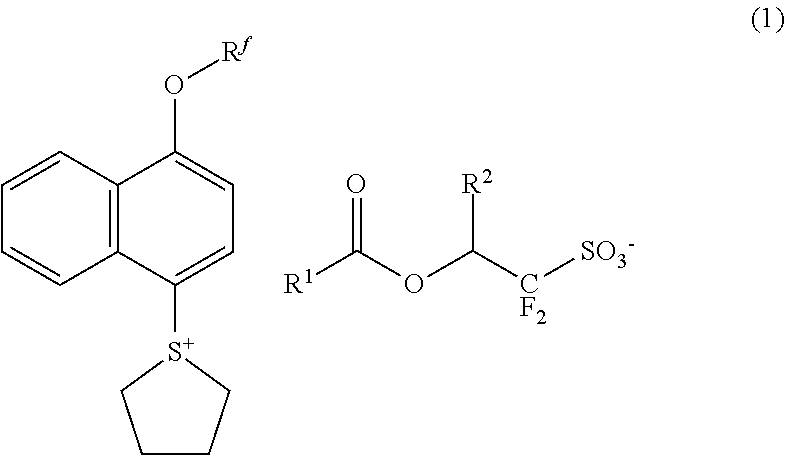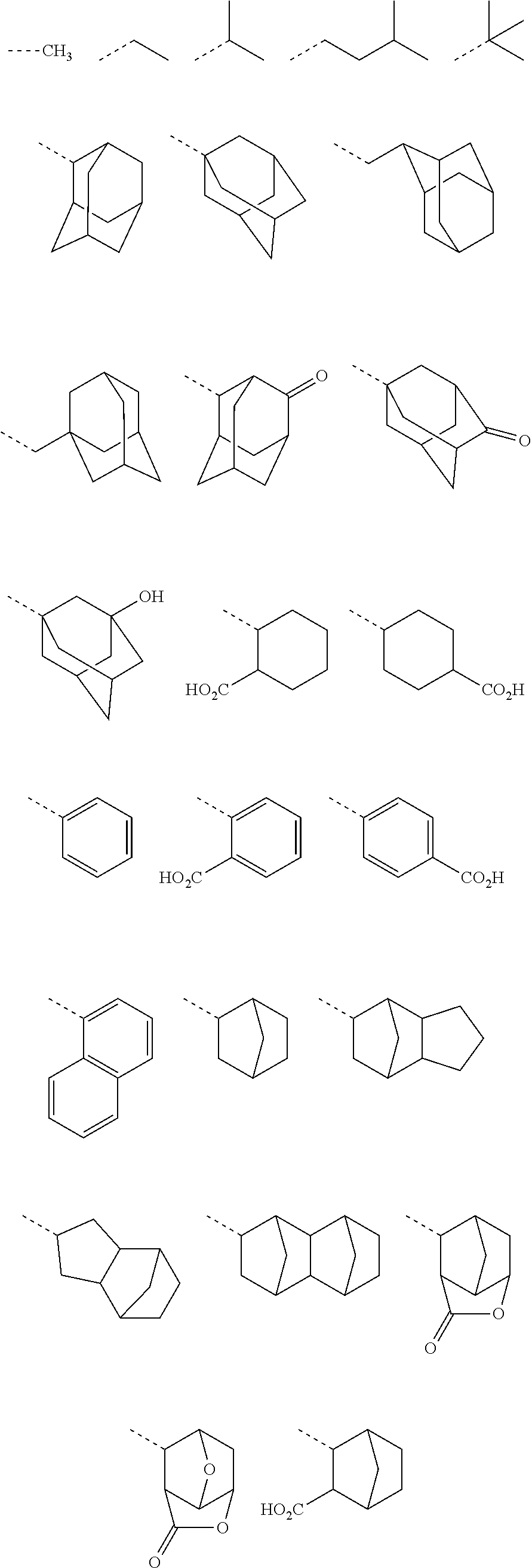Sulfonium salt, resist composition, and patterning process
a technology of resist composition and sulfonium salt, which is applied in the direction of photosensitive materials, instruments, photomechanical equipment, etc., can solve the problems of difficult application of resist materials, technology still needs resist materials, and retarded development, etc., to achieve less pattern dependence or dark/bright bias
- Summary
- Abstract
- Description
- Claims
- Application Information
AI Technical Summary
Benefits of technology
Problems solved by technology
Method used
Image
Examples
synthesis example 1
[0065]Sulfonium salts within the scope of the invention were synthesized by the following method.
synthesis example 1-1
Synthesis of benzyltrimethylammonium 1,1,3,3,3-pentafluoro-2-hydroxypropane-1-sulfonate
[0066]Benzyltrimethylammonium 1,1,3,3,3-pentafluoro-2-(pivaloyloxy)propane-1-sulfonate was synthesized in accordance with the teaching of JP-A 2007-304490. Next, the pivaloyl group was hydrolyzed (solvolysis) in accordance with the teaching of JP-A 2007-145804, yielding the desired intermediate, benzyltrimethylammonium 1,1,3,3,3-pentafluoro-2-hydroxypropane-1-sulfonate as white crystals.
synthesis example 1-2
Synthesis of benzyltrimethylammonium 2-(adamantane-1-carbonyloxy)-1,1,3,3,3-pentafluoropropane-1-sulfonate
[0067]Benzyltrimethylammonium 1,1,3,3,3-pentafluoro-2-hydroxypropane-1-sulfonate in Synthesis Example 1-1 and 1-adamantanecarboxylic acid chloride were reacted in accordance with the teaching of JP-A 2008-106045, yielding the desired compound, benzyltrimethylammonium 2-(adamantane-1-carbonyloxy)-1,1,3,3,3-pentafluoropropane-1-sulfonate as white crystals.
PUM
| Property | Measurement | Unit |
|---|---|---|
| feature size | aaaaa | aaaaa |
| temperature | aaaaa | aaaaa |
| temperature | aaaaa | aaaaa |
Abstract
Description
Claims
Application Information
 Login to View More
Login to View More - R&D
- Intellectual Property
- Life Sciences
- Materials
- Tech Scout
- Unparalleled Data Quality
- Higher Quality Content
- 60% Fewer Hallucinations
Browse by: Latest US Patents, China's latest patents, Technical Efficacy Thesaurus, Application Domain, Technology Topic, Popular Technical Reports.
© 2025 PatSnap. All rights reserved.Legal|Privacy policy|Modern Slavery Act Transparency Statement|Sitemap|About US| Contact US: help@patsnap.com



